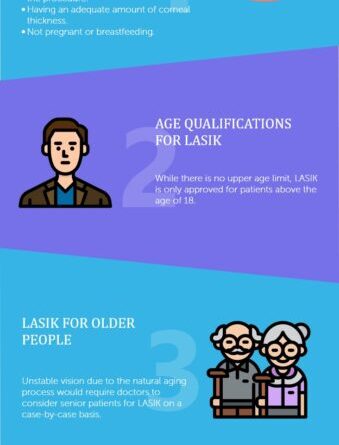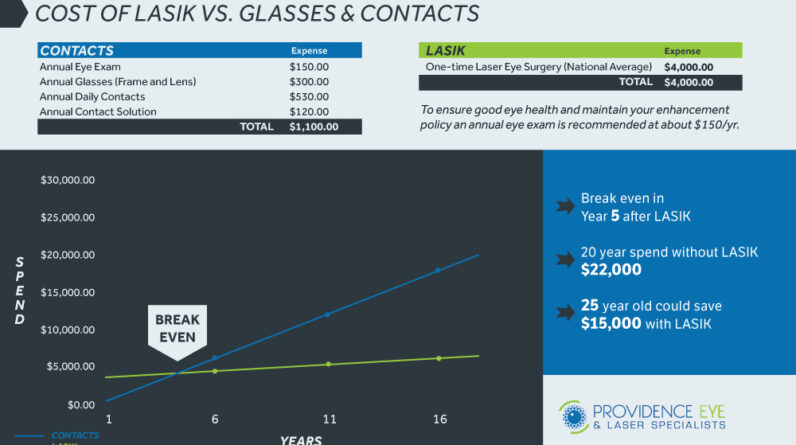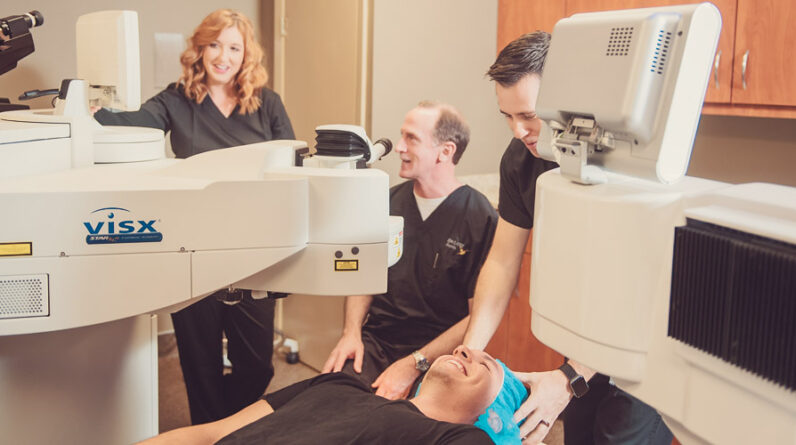Imagine a life without the hassle of glasses or contact lenses. Laser eye surgery has become a popular solution for many individuals seeking to improve their vision. But, you may wonder, how long does this procedure actually take? In this article, we will explore the duration of laser eye surgery, providing you with a clear understanding of what to expect during this life-changing procedure. So, sit back, relax, and let’s dive into the world of laser eye surgery.
Preparation for Laser Eye Surgery
Before undergoing laser eye surgery, there are several important steps you need to take to ensure a smooth and successful procedure. These preparations include consultation and evaluation, preparing for surgery, and arranging for transportation.

Consultation and evaluation
The first step in preparing for laser eye surgery is to schedule a consultation with a qualified eye surgeon. During this consultation, the surgeon will evaluate your eyes to determine if you are a suitable candidate for the procedure. They will assess your overall eye health, measure your corneal thickness, and determine your prescription. This evaluation is crucial in ensuring that you will benefit from laser eye surgery and that there are no underlying conditions that may affect the outcome.
Preparing for surgery
Once you have been deemed a good candidate for laser eye surgery, it is important to take certain precautions in the days leading up to the procedure. Your surgeon will provide you with a list of instructions to follow, which may include avoiding contact lenses for a certain period of time before the surgery, refraining from using eye makeup and lotions, and avoiding alcohol and certain medications that can interfere with the surgery. It is important to strictly adhere to these guidelines to ensure optimal results.
Arranging for transportation
On the day of your surgery, it is essential to arrange for reliable transportation to and from the surgical center. Due to the use of anesthesia and the temporary effects it may have on your vision, it is not recommended to drive yourself home after the procedure. Make sure to arrange for a trusted friend or family member to accompany you and drive you home. This will not only ensure your safety but also provide you with peace of mind during this exciting yet nerve-wracking time.
The Procedure of Laser Eye Surgery
Now let’s dive into the actual procedure of laser eye surgery. While the specifics may vary depending on the type of surgery you undergo, the general steps involved include the application of anesthetic drops, creation of a corneal flap, laser reshaping of the cornea, and repositioning of the corneal flap.
Anesthetic drops
Before the procedure begins, your surgeon will administer anesthetic eye drops to numb your eyes and ensure your comfort throughout the surgery. These drops will help prevent any sensation or pain during the procedure, allowing you to remain relaxed and at ease.
Creation of corneal flap
The next step involves creating a thin corneal flap, which allows the surgeon access to the underlying corneal tissue. There are different techniques used to create this flap, depending on the type of surgery. For example, in LASIK surgery, a microkeratome or femtosecond laser is used to create the flap, while in PRK and SMILE surgeries, the flap is not created at all.

Laser reshaping of cornea
Once the corneal flap has been created or the surface of the cornea has been appropriately prepared, the surgeon will use a laser to reshape the corneal tissue. This reshaping is done with extreme precision to correct your refractive error and improve your vision. The laser removes microscopic amounts of tissue from the cornea, gently sculpting it to the desired shape.
Repositioning the corneal flap
If a corneal flap was created during the procedure, it is then carefully repositioned back into its original position. This flap acts as a natural bandage and helps with the healing process. Your surgeon will ensure that the flap is properly aligned and adheres well to the underlying cornea.
Different Types of Laser Eye Surgery
There are several different types of laser eye surgery available, each with its own unique benefits and techniques. The most common types include LASIK, PRK, and SMILE.
LASIK (Laser-Assisted in Situ Keratomileusis)
LASIK is the most commonly performed laser eye surgery and offers a quick recovery time. During LASIK surgery, a corneal flap is created using either a microkeratome or a femtosecond laser. The underlying cornea is then reshaped using an excimer laser, which corrects any refractive errors. The flap is then repositioned, and the natural healing process begins. Most people experience improved vision within a day or two after LASIK surgery.
PRK (Photorefractive Keratectomy)
PRK is another type of laser eye surgery that is particularly suitable for individuals with thin corneas or other corneal irregularities. Unlike LASIK, PRK does not involve the creation of a corneal flap. Instead, the surgeon removes the outer layer of the cornea, called the epithelium, and uses an excimer laser to reshape the underlying cornea. The epithelium regenerates naturally over time, resulting in improved vision. The recovery period for PRK is usually longer compared to LASIK, as it takes time for the epithelium to grow back and stabilize.
SMILE (Small Incision Lenticule Extraction)
SMILE is a newer type of laser eye surgery that offers a minimally invasive approach. During SMILE surgery, a femtosecond laser is used to create a small, disc-shaped piece of tissue, called a lenticule, within the cornea. The surgeon then removes this lenticule through a small incision, changing the shape of the cornea and correcting any refractive errors. As SMILE surgery does not involve the creation of a corneal flap, it has the advantage of preserving the cornea’s structural integrity. The recovery time for SMILE is typically shorter compared to PRK, with many patients experiencing improved vision within a few days.
Factors Affecting the Duration of Laser Eye Surgery
The duration of laser eye surgery can vary from person to person and is influenced by several factors. These factors include the individual’s prescription, the technique used, the surgeon’s experience, and patient cooperation.
Individual’s prescription
The severity of your refractive error or prescription can affect the duration of the surgery. Individuals with higher prescriptions may require a more extensive reshaping of the cornea, which can result in a slightly longer surgical time. On the other hand, individuals with milder prescriptions may undergo a quicker procedure.
Technique used
Different laser eye surgery techniques can impact the duration of the surgery. For example, LASIK surgery is generally faster compared to PRK, as the creation of a corneal flap allows for easier access to the underlying cornea. The specific technique chosen by your surgeon will depend on your individual needs and suitability.
Surgeon’s experience
The experience and expertise of the surgeon also play a role in the duration of the surgery. Highly skilled surgeons who have performed numerous laser eye surgeries are often more efficient and can complete the procedure more quickly. It is essential to choose a reputable surgeon with a proven track record to ensure the best possible outcome.
Patient cooperation
Finally, the cooperation of the patient during the surgery can affect the overall duration. It is crucial to follow the surgeon’s instructions and remain calm and still throughout the procedure. Any unnecessary movement or disruption can prolong the surgical time and potentially compromise the results.
Duration of Lasik Laser Eye Surgery
LASIK surgery is known for its quick and efficient procedure. The duration of LASIK surgery can be broken down into different components, including the time for each eye, the actual surgical time, and post-operative instructions.
Time for each eye
LASIK surgery is typically performed on both eyes during the same session. However, the duration for each eye may differ slightly. On average, the surgical time for each eye ranges from 5 to 10 minutes. Your surgeon will assess your specific needs and provide a more accurate estimate during the consultation.

Actual surgical time
The actual surgical time for LASIK is relatively short. As mentioned earlier, it usually takes around 5 to 10 minutes per eye. This includes the creation and repositioning of the corneal flap, as well as the laser reshaping of the cornea.
Post-operative instructions
After LASIK surgery, your surgeon will provide you with detailed post-operative instructions. These instructions may include using prescribed eye drops, avoiding strenuous activities for a certain period, and attending follow-up appointments. Adhering to these instructions is crucial for a smooth recovery and optimal results.
Duration of PRK Laser Eye Surgery
PRK surgery, although similar to LASIK in many ways, has a few key differences that can affect the duration of the procedure.
Time for each eye
The surgical time for each eye in PRK surgery is generally slightly longer compared to LASIK. On average, it takes around 10 to 15 minutes per eye. It is important to note that this timeframe may vary depending on your individual needs and the specific technique used by your surgeon.
Actual surgical time
The actual surgical time for PRK is longer compared to LASIK, mainly because the procedure does not involve the creation of a corneal flap. Instead, the surgeon removes the outer layer of the cornea, which adds some additional time to the overall surgical duration. On average, the surgical time for PRK ranges from 20 to 30 minutes for both eyes.
Post-operative instructions
Following PRK surgery, you will be provided with specific post-operative instructions to facilitate proper healing. These instructions typically include using prescribed eye drops, avoiding strenuous activities for a certain period, and protecting your eyes from bright lights and UV exposure. It is essential to diligently follow these instructions to ensure a smooth recovery.
Duration of SMILE Laser Eye Surgery
SMILE surgery, with its unique technique, offers a relatively quick and efficient procedure.

Time for each eye
The surgical time for each eye in SMILE surgery is comparable to that of LASIK. On average, it takes around 5 to 10 minutes per eye. The removal of the lenticule and reshaping of the cornea using the femtosecond laser are precise and efficient processes, contributing to the shorter surgical duration.
Actual surgical time
The actual surgical time for both eyes in SMILE surgery is typically between 10 to 20 minutes. This includes the creation of the small incision, removal of the lenticule, and reshaping of the cornea. The surgeon’s experience and expertise play a significant role in optimizing the efficiency of the procedure.
Post-operative instructions
After SMILE surgery, you will receive specific post-operative instructions to aid in the healing process. These instructions typically include using prescribed eye drops, avoiding rubbing your eyes, and attending follow-up appointments with your surgeon. Adhering to these instructions is crucial for a successful recovery.
Recovery Period
Following laser eye surgery, a certain recovery period is necessary for your eyes to heal and for your vision to stabilize. The recovery period can be categorized into immediate recovery, initial healing period, stabilizing vision, and final results.
Immediate recovery
Immediately after the surgery, you may experience some mild discomfort, such as a scratchy or gritty sensation in your eyes. This is normal and should subside within a few hours. Your vision may also be slightly blurry or hazy during this time. It is essential to rest and avoid any strenuous activities for the remainder of the day to aid in the healing process.
Initial healing period
The initial healing period typically lasts for the first few days following the surgery. During this time, your eyes may continue to feel a bit dry, and your vision may fluctuate. Your surgeon will provide you with specific post-operative instructions, including the use of prescribed eye drops to keep your eyes lubricated and promote healing. It is crucial to follow these instructions diligently for a smooth recovery.
Stabilizing vision
As the days and weeks pass, your vision will gradually stabilize. You may notice improved clarity and sharpness, although it is normal for some fluctuations to occur. During this stage, it is essential to attend follow-up appointments with your surgeon to monitor your progress and ensure that your eyes are healing as expected.
Final results
The final results of your laser eye surgery will become apparent once your vision has fully stabilized, which can take anywhere from a few weeks to a few months, depending on the individual. By diligently following your surgeon’s instructions and attending follow-up appointments, you can maximize your chances of achieving optimal vision correction.
Return to Normal Activities
After laser eye surgery, returning to your normal activities is an exciting milestone. However, it is important to be mindful of your eyes’ healing process and take certain precautions as you gradually resume your daily routine.
Driving
The ability to drive safely is a crucial aspect of returning to your normal activities. Prior to resuming driving, it is important to obtain clearance from your surgeon during a follow-up appointment. Depending on your individual healing progress, your surgeon will advise you on the appropriate timing for returning to driving. It is crucial to prioritize your safety and the safety of others on the road.
Work
Returning to work after laser eye surgery largely depends on the nature of your job and the post-operative instructions provided by your surgeon. If your work involves minimal strain on your eyes, such as desk work, you may be able to return within a few days. However, if your work requires significant eye exertion or exposure to potential eye hazards, it is advisable to take more time off to ensure proper healing. Your surgeon will provide personalized guidance based on your specific circumstances.
Exercise
Engaging in physical exercise and recreational activities is an important part of a healthy lifestyle. Following laser eye surgery, it is generally recommended to avoid strenuous activities and contact sports for a certain period. This is to prevent any accidental injury to your eyes during the healing process. Your surgeon will provide specific guidelines regarding the appropriate timing for resuming exercise based on your unique circumstances.
Overall Timeframe for Laser Eye Surgery
The overall timeframe for laser eye surgery can be divided into three main phases: consultation to surgery, surgery duration, and recovery and healing period.
Consultation to surgery
The duration between the initial consultation and the actual surgery can vary depending on several factors. It is important to allocate sufficient time for complete evaluation and preparation before proceeding with the surgery. This timeframe usually ranges from a few weeks to a couple of months, allowing you ample time to make an informed decision and adequately prepare yourself mentally and physically.
Surgery duration
The surgical time for laser eye surgery is relatively short and typically ranges from 10 to 30 minutes for both eyes, depending on the specific technique and individual factors. The actual surgical procedure itself is quick and efficient, allowing you to achieve vision correction in a matter of minutes.
Recovery and healing period
The recovery and healing period following laser eye surgery can vary from person to person. It is important to anticipate several days to a few weeks for your vision to stabilize and for the healing process to progress. During this time, you will need to follow your surgeon’s post-operative instructions carefully to ensure a smooth recovery and maximize your chances of achieving optimal results.
In conclusion, the duration of laser eye surgery can be influenced by various factors, such as the type of surgery, individual prescription, surgeon’s experience, and patient cooperation. Understanding the different stages of the procedure, the recovery period, and the necessary precautions for returning to normal activities will help you navigate the journey towards improved vision with confidence. By following your surgeon’s instructions and attending scheduled follow-up appointments, you can increase the likelihood of a successful outcome and enjoy the long-term benefits of laser eye surgery.







